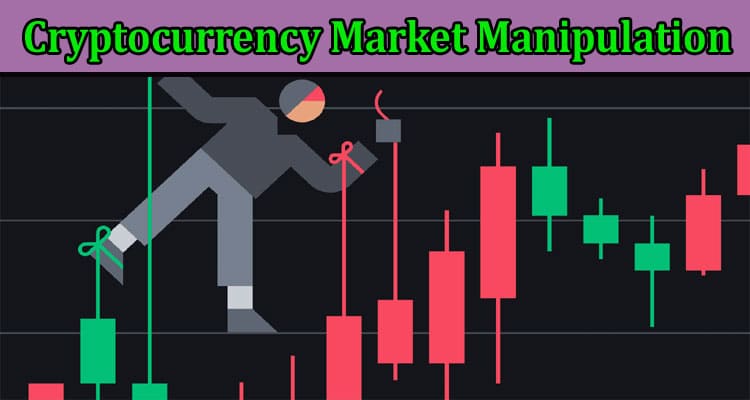In the ever-evolving landscape of financial markets, the identification of market manipulation is paramount. This expert documentary explores the intricate world of Indicators of Market Manipulation, shedding light on the signs, methods, and consequences that every investor and regulator should be aware of. Immediate Vortex Software is a one-of-a-kind online website – think of it as your trusted buddy in the world of investments. It’s like having a smart friend who can connect you with people who can educate and assist you in navigating the enormous world of financial.
Unusual Trading Patterns
Unusual trading patterns are a critical aspect of identifying potential market manipulation within the financial markets. These patterns, often characterized by atypical price movements and trading volumes, can serve as red flags for investors and regulators alike. They indicate deviations from normal market behavior and are essential indicators of irregularities that warrant closer scrutiny.
In essence, unusual trading patterns refer to sudden and unexpected fluctuations in the price and volume of a security or asset. These fluctuations can take various forms, such as rapid price spikes or plunges, abnormally high or low trading volumes, and erratic trading activity during non-standard market hours.
One of the most common manifestations of unusual trading patterns is known as a “flash crash,” where a security experiences a rapid and severe decline in price within a very short period, often followed by a quick recovery. These events can be alarming, as they may signal coordinated efforts to manipulate the market.
Detecting unusual trading patterns requires a keen eye and access to real-time market data. Traders and analysts use sophisticated algorithms and trading software to monitor price and volume movements continuously. When deviations from the norm occur, automated alerts are triggered, prompting further investigation.
While unusual trading patterns can sometimes result from legitimate market events, such as breaking news or major economic releases, they often indicate market manipulation attempts. Manipulators may engage in activities like “spoofing,” where they place fake orders to create a false sense of market demand or supply, or “pump and dump” schemes, where they inflate the price of a security before selling it off at a profit.
Abnormal Price Movements
Abnormal price movements are a significant concern in financial markets, and their detection is critical for investors and regulators alike. These movements refer to sudden and unexpected fluctuations in the prices of securities or assets that deviate significantly from their historical patterns or prevailing market conditions. Recognizing abnormal price movements is crucial for maintaining market integrity and protecting the interests of investors.
One common form of abnormal price movement is a rapid and extreme price spike or drop. Such occurrences can be triggered by a variety of factors, including unexpected news events, corporate earnings reports, or geopolitical developments. While some abnormal price movements are driven by genuine market dynamics, others can be manipulated by traders or entities seeking to profit from these fluctuations.
Market manipulators often employ tactics like “pump and dump,” where they artificially inflate the price of a security through aggressive buying, spreading positive rumors, or using social media, only to sell off their holdings once the price has reached an inflated level. This deceptive practice can lure unsuspecting investors into buying at elevated prices, leading to significant losses when the manipulators exit the market.
Abnormal price movements can also be a result of coordinated efforts to corner a market or manipulate commodity prices. In these cases, large institutional players may use their substantial resources to distort supply and demand dynamics, driving prices to levels that benefit their positions.
For investors, detecting abnormal price movements requires careful analysis of price charts, volume data, and news flow. Technical and fundamental analysis can help in identifying whether a price move is supported by underlying market fundamentals or is a result of manipulation. Additionally, monitoring trading patterns and liquidity in specific markets can reveal unusual activity.
Volume Discrepancies
Volume discrepancies in financial markets are a critical aspect of market analysis, often serving as a reliable indicator of potential irregularities or market manipulation. These discrepancies refer to deviations in trading volume from what is considered normal or expected for a particular security, asset, or market condition. Recognizing volume discrepancies is essential for investors, traders, and regulators as they can provide valuable insights into market dynamics.
Understanding typical trading volume for a specific security is key to identifying volume discrepancies. Each security typically has a baseline level of trading activity, which can vary based on factors like market capitalization, liquidity, and news events. When trading volume deviates significantly from this baseline, it raises concerns.
One common scenario involving volume discrepancies is during the execution of market manipulation schemes. Manipulators may engage in activities like “wash trading,” where they simultaneously buy and sell the same security to create a false impression of high trading activity. This can lure unsuspecting investors into the market, potentially leading to price manipulation or artificial inflation of the security’s value.
Another form of volume discrepancy is seen in “spoofing,” where manipulators place large orders with no intention of executing them, creating the appearance of significant buying or selling interest. This can induce other market participants to follow suit, further distorting trading volume and market sentiment.
Conclusion
Market manipulation poses a persistent threat to financial markets. Recognizing indicators such as unusual trading patterns, abnormal price movements, and volume discrepancies is essential for safeguarding market integrity. By staying informed and vigilant, investors and regulators can work together to deter manipulation and maintain a fair and transparent financial ecosystem.

